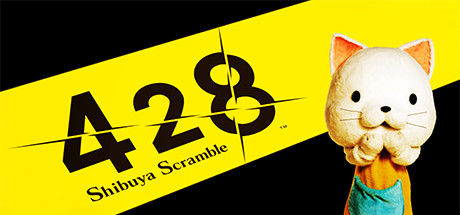428: Shibuya Scramble is a visual novel about five individuals and a kidnapping case. The story is told through scrolling text, still photographs, and videos. The characters are all acting in parallel, and their paths occasionally intersect and influence each other. The gameplay is centered around a time chart, which allows the player to jump through time and between player perspectives. The story is broken up by each hour of an individual day. In order to advance to the next hour, the player must finish progressing through the hour from each character’s perspective. As they read through the story, the player must make decisions and choose what path to follow. The characters’ paths influence each other, and the plot cannot advance without the correct interactions between all of the characters.
This is a single player game versus the game. The player takes on the role of the five different characters in the story. The objective is solution: you must solve the mysteries and make all the correct decisions to get to the true ending. The game procedure is to read, make decisions when they appear, and use the time chart to jump to a different character’s story. The conflict is against the story, and players must make the right choices to avoid bad endings. There are over 80 possible bad endings, but only one true ending. Not all endings are required to complete the game. The boundaries of the game are the application, which I play on PC. The type of fun is narrative, and I think it is very fun. The story is dramatic and thrilling, and the writing is suspenseful and sometimes laugh-out-loud funny.
I’ve been playing this game with my friend for the past couple of months, and I think it is phenomenal. I have played a decent number of visual novels and narrative games, and I think this is one of the best by far.
Aesthetically, this game is very well executed. At first, I thought that it would be strange to see photographs in a game, but the shots are all well composed. Some images are animated, and some employ zoom or movement in interesting ways for emphasis. The text is broken up into chunks that are easy to read, and text scroll speed and text size are also used effectively for emphasis. The sound effects and soundtrack are amazing and reflect Chunsoft’s roots in sound novels.
The gameplay is what makes this game shine as a visual novel. The time chart is very clever and makes every decision feel meaningful. The time chart works like a puzzle: occasionally you’ll come across crossroads that won’t let you advance until you make a correct decision in another character’s timeline, or make two characters interact. Because the story is broken up by the hour and you cannot advance until all characters reach the hour, there are effectively four built-in cliffhangers that leave you anxious to play more. This type of gameplay also leads to a lot of bad endings, but it doesn’t feel tedious or frustrating at all. My friend and I occasionally purposely make choices we know are wrong because we know the ending will probably be hilarious, and jumping back to the correct path is easy.
The writing mixes action and humor quite well, and jumping between five different characters allows the game to weave together multiple moods and storytelling styles. As a result, the game always feels fresh, despite hours of essentially just reading. Unlike many visual novels with self-insert characters, this game gives each character a strong personality, so there is also an interesting tension between making choices you would make and choices you think the character would make.



